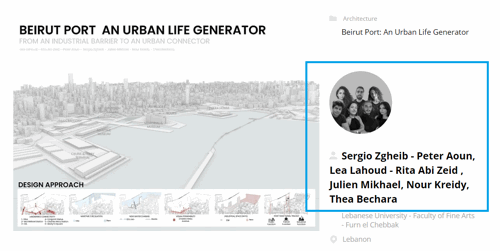Renewed harbour in Slubice/Frankfurt(Oder)

Project idea
The designated area is located on the Poland-Germany border, between the Polish city of Słubice and Frankfurt (Oder). The design proposes to transform the old, rarely used docks into a place of integration, recreation and leisure in the sun and fresh air. The analysis of the current state of the area makes it easy to see the undiscovered potential of the harbour. It's located near the only nearby border crossing - the Słubice/Frankfurt(Oder) bridge, which makes it a high-traffic area. Roads near the marine are frequently used by the touring public, students of the nearby university and residents of both towns. That makes it the perfect place for an area focused on integration and public functions-focused infrastructure. The lagoon offers a shelter for many birds and small animals, which, combined with its endearing, peaceful landscape, makes it a perfect place for taking a much-needed break from the city.
Project description
The designed building, situated in the centre of the area, would offer crucial infrastructure and amenities needed by both water and land users. The site would be open to the residents of Słubice and Frankfurt, but more importantly, it would become an extremely attractive place for tourists and visitors - everyone would be welcome to sit in the marina’s cosy restaurant, rent a waterbike or walk the piers through the wetlands. The harbour facilities include a sauna, gym, and separate bathroom spaces for the canoeists and sailors. The project also includes the development of the surrounding areas. A part of the wetlands would be enriched with a system of elevated and ground-level piers. The upper parts of this nature trail would be available to the public even in the case of a rise in the water level. The piers form a path through the driest parts of the wetlands, connecting with the top level of the existing levee, and forming a smooth walkway to Słubice and Frankfurt through the planned bridges. The water stage planned near the new bridge, with its audience placed on the slope of the levee, would make for a perfect place for concerts and other events.
Technical information
The main design concept was to integrate level -1, which can be flooded in case of rising water levels, into the flood embankment. Level 0, located at the top of the embankment, allows for a smooth passage to its further part that leads to the floating stage and piers. The structure of the building is based on a frame system composed of beams and columns. I-beams extending beyond the main structure, combined with additional longitudinal metal elements, serve as an openwork canopy over the terrace. The mono-pitched, green roof, featuring windows at its breaks and a skylight, allows the building to blend into its surroundings while bringing more natural light inside. The building’s facades incorporate vertical divisions formed by beams, repeated all around the block.



